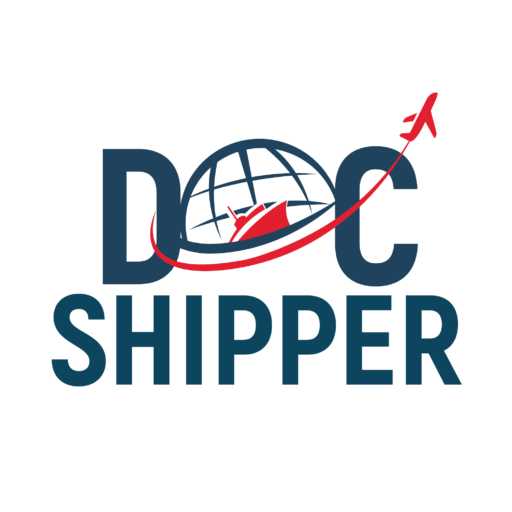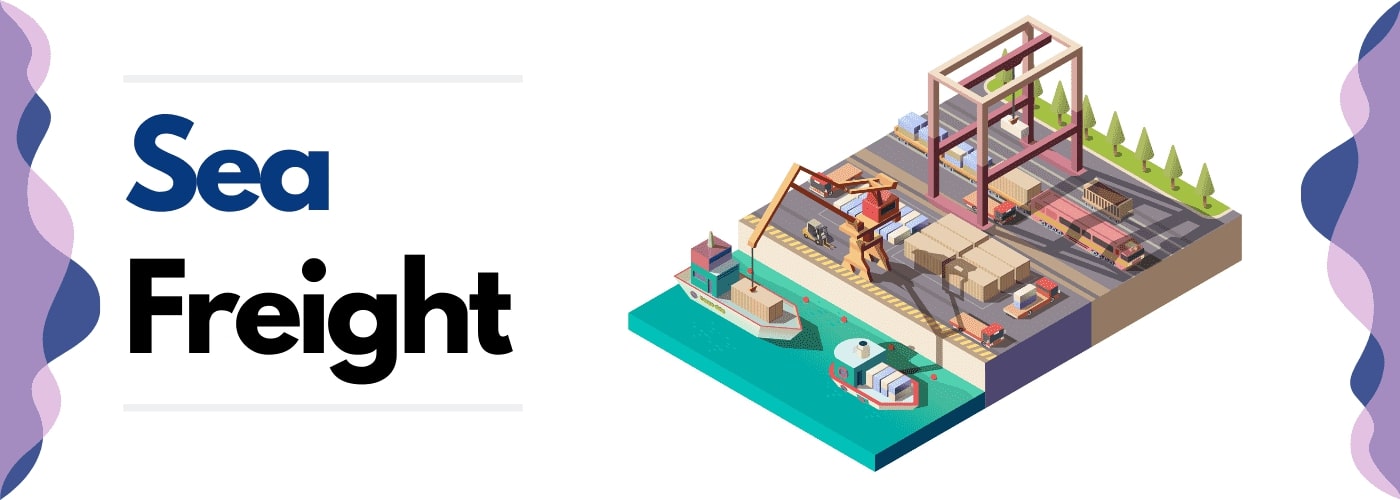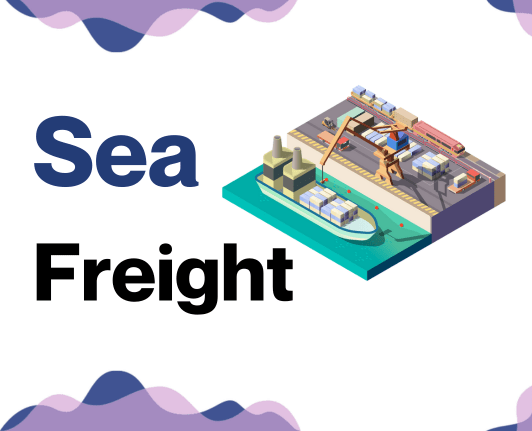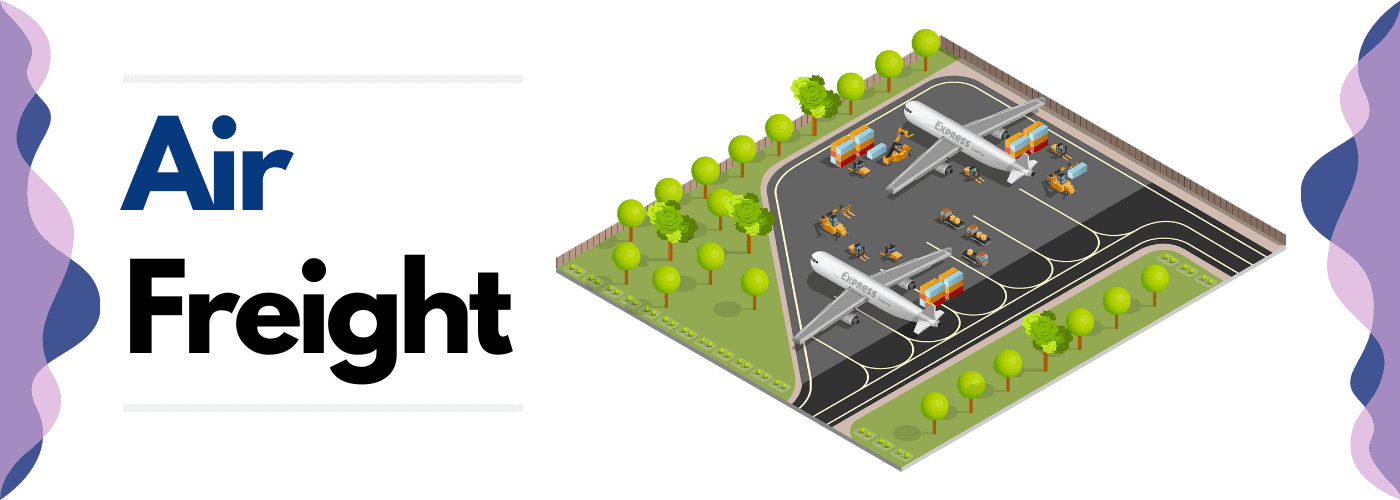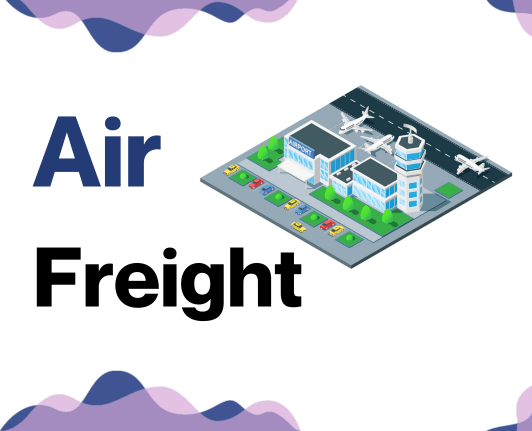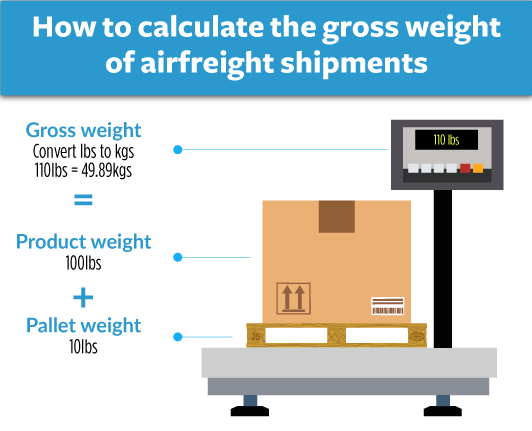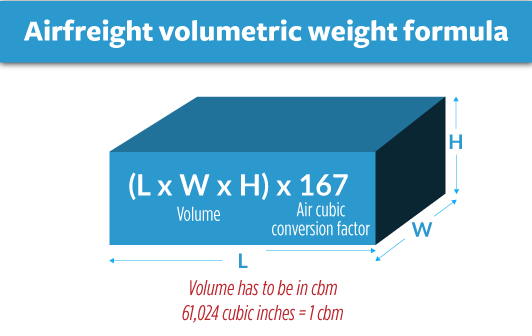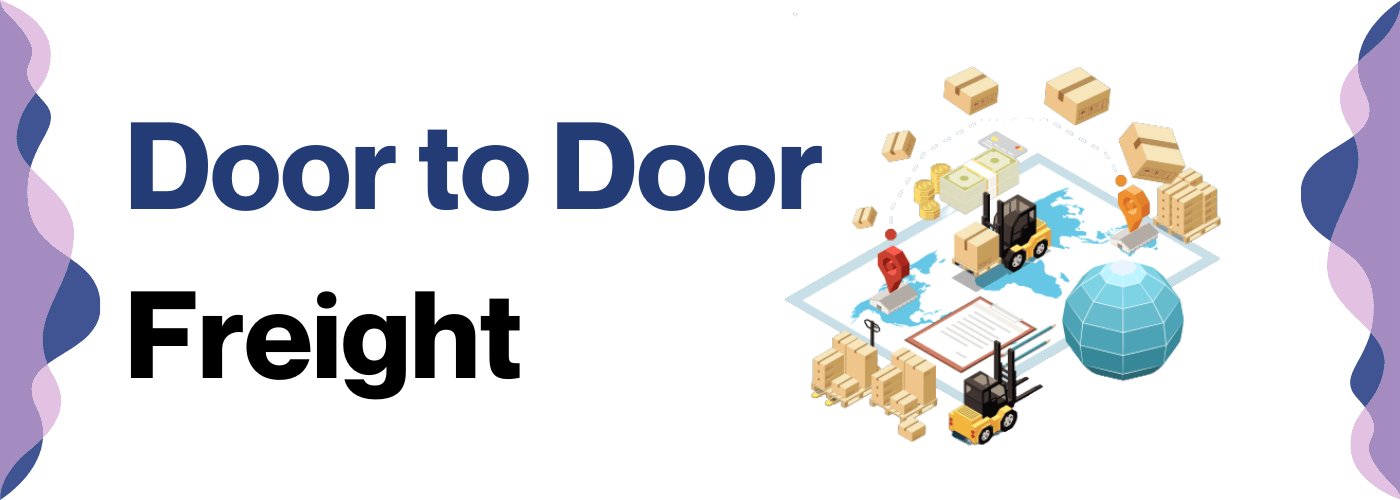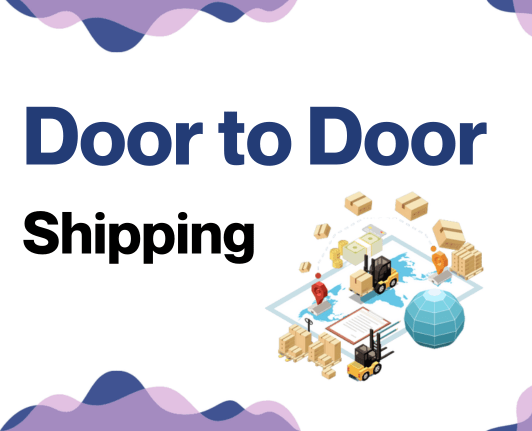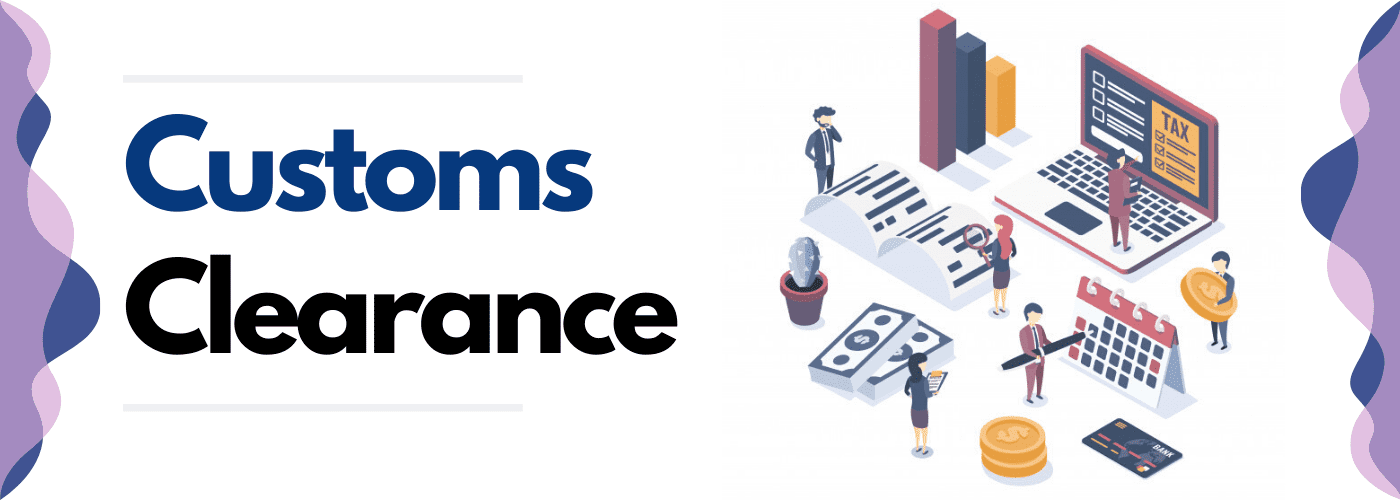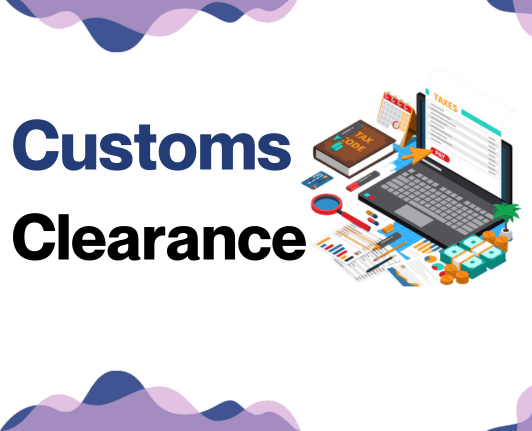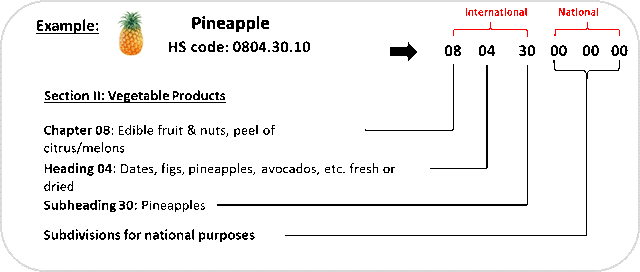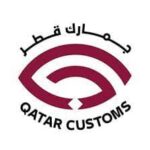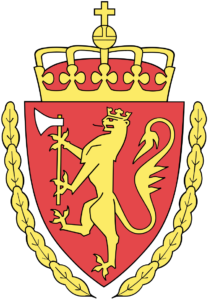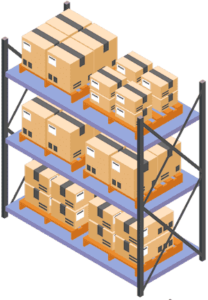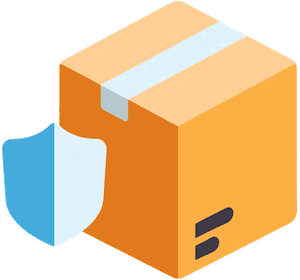Imagine shipping a hefty load of smoked salmon from Norway to Qatar; wouldn't it be a hoot if it arrived smelling more like 'melted cheese'? Jokes aside, the complexities involved in the process, understanding rates, transit times and compliance with customs' regulations can turn this into a rather fishy situation. This comprehensive guide is here to untangle these complicated threads. Expect to delve into different freight options - air, sea, road, and rail - and gain in-depth insights into customs clearance, duties, and taxes. You'll also receive wedges of advice explicitly tailored for businesses, ensuring smooth sailing for your goods between these two nations. If the process still feels overwhelming, let DocShipper handle it for you! We're a salt-of-the-earth international freight forwarder that effectively manages every task of the shipping process, transforming potential roadblocks into milestones on the route to your success.
Which are the different modes of transportation between Qatar and Norway?
Shipping goods from sunny Qatar to the fjords of Norway? It's quite the journey! Although air travel might seem quickest, it's pricey. Road or rail? They face a slew of borders and terrains. So, picture plenty of ships! Yes, as explorers once did, we turn to the sea. Reliable and cost-effective, ocean freight suits large loads and tight budgets. Always remember, your decision will be like picking the perfect outfit; it depends on the occasion, or in this case, the type of cargo. So, buckle up for a voyage and let's dive deep into your sea freight options.
How can DocShipper help?
Facing difficulties in shipping your goods between Qatar and Norway? Take a deep breath and let DocShipper manage it! From ensuring safe transportation, be it by air, sea, or land, to handling complex Customs, we have your back. Interested? Get your free estimate in under 24 hours or chat with our consultants for instant help.
DocShipper Tip: Sea freight might be the best solution for you if:
- You're dealing with hefty quantities or large-scale goods. Sea freight is your go-to for maximizing space without stretching your budget.
- Your cargo doesn't have an urgent deadline, as sea freight typically has longer transit times compared to air or rail.
- Your shipping routes are between major ports, allowing you to leverage the extensive global network of sea shipping lanes.
Sea freight between Qatar and Norway
Unravel the vibrant trade relationship between Qatar and Norway, masterfully connected by sea routes. The cargo ships navigate from Qatar's Hamad Port - a hub for petrochemicals and construction materials - to Norway's Port of Oslo, the epicenter of vehicles and machinery trade. Yet, despite the allure of ocean shipping's cost-effectiveness and its capacity for transporting considerable volumes, it's a course fraught with complexities.
Shipments missing their port of call, misunderstood regulations, or overlooked customs requirements are common missteps. Inevitably, these result in delays, extra charges, and, at worst, lost cargo - symptoms of a voyage poorly navigated.
Think of ocean shipping like a grand orchestra. It requires a symphony of correct documentation, meeting customs requirements, abiding by regulations, and understanding port protocol. But don't fret... we'll be your conductor and guide you through each crescendo of this intricate, maritime composition. By adopting the best practices and specifications detailed ahead, you'll be well-equipped for your seafaring journey from Qatar to Norway.
Main shipping ports in Qatar
Hamad Port
Location and Volume: Located on the southeastern coast of Qatar, Hamad Port is critical for serving the gulf region, with a shipping volume of over 2 million TEU per year.
Key Trading Partners and Strategic Importance: The port has strengthened its ties with the Far East, including China and Korea, boosting Qatar's strategic importance. It's also known for achievements such as being the fastest-growing port in the world in 2019 according to Alphaliner.
Context for Businesses: If you're planning to expand into the growing markets of the Middle East, Hamad Port could be vital to your logistics given its prominent location, modern infrastructure and capacity to handle various types of cargo.
Doha Port
Location and Volume: Situated in the heart of Qatar’s capital, Doha Port has historically been the primary maritime gateway for the country, handling a substantial amount of shipping traffic primarily for smaller vessels and cruise liners.
Key Trading Partners and Strategic Importance: Doha Port primarily serves regional trade routes, strengthening Qatar's connectivity with neighboring gulf countries. The port also holds significance for receiving passenger vessels and thereby boosting Qatari tourism.
Context for Businesses: If your shipping operations involve smaller vessels or cater to the regional gulf market, Doha Port can serve as a strategic node in your logistics. Its central location affords it excellent connectivity to meet your diverse shipping needs.
Ras Laffan Port
Location and Volume: Positioned on the northeastern coast of Qatar, Ras Laffan Port serves as a crucial hub for the oil and gas industry. It hosts numerous facilities for the production and export of liquefied natural gas (LNG) and gas-to-liquids (GTL).
Key Trading Partners and Strategic Importance: The port's primary trading partners are countries with high energy demand – Japan, South Korea, and India are prime examples. Its strategic importance resides in its role as a leading global provider of LNG.
Context for Businesses: If your operations are in the energy sector and you are contemplating sourcing LNG or GTL, Ras Laffan Port could be pivotal to your strategy due to its significant role in the global energy market, and its capacity to serve large LNG carriers.
Main shipping ports in Norway
Port of Oslo
Location and Volume: Located in the capital city of Norway, Oslo, this port is an essential hub of sea transportation with a shipping volume of over 6 million tonnes annually.
Key Trading Partners and Strategic Importance: Many trade relations with European countries are anchored here, with Germany, the Netherlands, and the UK being primary trading partners. It is an economic powerhouse contributing considerably to Norway's GDP.
Context for Businesses: If you're exploring opportunities in the Scandinavian market, the Port of Oslo, thanks to its centrality and robust connections, can be pivotal in your logistics strategy.
Port of Bergen
Location and Volume: Nestled in the southwestern part of the country, the Port of Bergen sees an annual shipping volume of approximately 15 million tonnes.
Key Trading Partners and Strategic Importance: The port has strong trade links with countries like the UK, US, and other EU nations. As a significant distribution hub for seafood, it bolsters Norway's reputation as a leading seafood nation.
Context for Businesses: If your business is in the food sector, especially seafood, the Port of Bergen could very well be a crucial link in your supply chain due to its specialized infrastructure for seafood distribution.
Port of Narvik
Location and Volume: Situated in the northern part of Norway, the Port of Narvik has an annual shipping volume of about 22 million tonnes.
Key Trading Partners and Strategic Importance: This port is significant for export to European markets. Importantly, it is the primary exit port for Swedish iron ore exports, underlining its strategic importance.
Context for Businesses: If you're in the mining or heavy industries sector, the Port of Narvik could serve as a strategic location due to its specialized infrastructure and heavy-duty handling facilities.
Port of Trondheim
Location and Volume: The Port of Trondheim, in the central part of the country, deals with a shipping volume of nearly 5 million tonnes per year.
Key Trading Partners and Strategic Importance: The port maintains active trade relations within the EU, mainly transportation of minerals and goods tied to the energy sector.
Context for Businesses: Businesses in the energy sector might find the Port of Trondheim particularly advantageous for their logistics, given its strategic positioning and strong connections within the EU.
Moss Port
Location and Volume: The Moss Port, located southeast of Oslo, sees an annual shipping volume of over 1.5 million tonnes.
Key Trading Partners and Strategic Importance: It plays a vital part in trade with Denmark, Sweden, and the rest of Europe, with a particular focus on ro-ro traffic.
Context for Businesses: If your logistics concentrate on ro-ro shipments, the Moss Port, with its specialized infrastructure and strong connectivity, may fit your needs effectively.
Port of Fredrikstad
Location and Volume: Placed along the eastern coastline, the Port of Fredrikstad handles a volume of nearly 2 million tonnes annually.
Key Trading Partners and Strategic Importance: The port is the main channel for trade within Scandinavia and Europe, especially for timber and construction materials.
Context for Businesses: If you are in the construction and timber industry, the Port of Fredrikstad could be a significant choice for your shipping strategy, thanks to its specially designed facilities and robust connections with the European market.
Should I choose FCL or LCL when shipping between Qatar and Norway?
When shipping goods from Qatar to Norway, your sea freight options boil down to Full Container Load (FCL) or Less than Container Load (LCL), also known as consolidation. Choosing wisely between these two could significantly influence your shipping costs, delivery times, and ultimately, your success in logistics. It's vital to have clear, practical knowledge about both to make a decision that best aligns with your specific shipping needs. Get familiar with these options as we delve into their pros, cons, and strategic implications!
LCL: Less than Container Load
Definition: LCL (Less than Container Load) shipping is a method of transporting goods that aren't enough to fill a standard shipping container. It involves sharing a container with other shippers' goods.
When to Use: LCL is the optimal choice if you have a lower volume of goods to ship - typically when your cargo is less than 13-15 CBM (Cubic Meters). Its flexibility allows for more frequent shipments as you don't have to wait to accumulate enough goods for a full container.
Example: For instance, let’s say you're exporting a small lot of engineering tools from Qatar to Norway. Rather than holding back your shipment to accumulate a full container load, LCL allows you to deliver these tools much quicker by consolidating with other shipments.
Cost Implications: Choosing LCL means reduced costs for smaller cargo sizes, as you only pay for the space you use within the shared container. However, remember that an LCL freight might have additional charges due to the consolidation and deconsolidation process. Always request an LCL shipping quote to ascertain the total cost. So, when seeking improved flexibility and cost efficiency for your smaller shipments, consider LCL shipment.
FCL: Full Container Load
Definition: FCL (Full Container Load) shipping is a type of sea freight service where a whole container is used by one shipper for their cargo.
When to Use: This is recommended when your cargo exceeds 13/14/15 CBM (Cubic Meters). The benefits of FCL shipping stem from economies of scale and safety due to the container remaining sealed from origin to destination.
Example: Consider a business dealing in heavy machinery parts in Qatar, looking to transport hefty shipments of over 15 CBM to Norway. Opting for FCL can ensure safety and cost-effectiveness. Both 20'ft and 40'ft FCL containers can be used depending on the total volume of the cargo.
Cost Implications: The price advantage of FCL is significant especially for larger volumes, as you pay a flat rate for the space of the entire container rather than a per CBM basis. Hence, the more you ship, the less you pay per unit. It’s important to analyze your cargo volume and get an accurate FCL shipping quote to ensure the most cost-effective decision.
Unlock hassle-free shipping
Streamline your cargo shipping from Qatar to Norway with DocShipper’s unmatched expertise. Making freight forwarding effortless and efficient is our mission. Trust in our ocean freight specialists who consider crucial factors such as rates, shipment size, and time constraints to suggest optimal options: consolidation or full container shipping. Step forward in confidence with DocShipper – we're here to guide your shipping decisions. Reach out to us now for a free estimation of your shipping costs. Embrace hassle-free freight forwarding. You focus on growth, we'll handle the cargo.
How long does sea freight take between Qatar and Norway?
The journey through sea freight between Qatar and Norway takes an average of 30 days. These transit times encapsulate factors such as the specific port of departure and arrival, the weight of the shipment, and the nature of the goods transported. Although this average shipping time gives a ballpark figure, it is advised that businesses get in touch with a seasoned freight forwarder like DocShipper for an accurate, customized quote tailored to their specific shipping needs.
Estimated Transit Time (Days) for Sea Freight between Qatar and Norway
| From (Qatar Ports) | To (Norway Ports) | Average Transit Time (Days) |
| Port of Ras Laffan | Port of Bergen | 28 days |
| Port of Ras Laffan | Port of Oslo | 28 days |
| Port of Mesaieed | Port of Bergen | 28 days |
| Port of Mesaieed | Port of Oslo | 29 days |
*Please note: These figures are averages and the exact transit time may be different based on various factors. We recommend contacting us at DocShipper for a precisely tailored quote.
How much does it cost to ship a container between Qatar and Norway?
Translating the intricacies of ocean freight rates from Qatar to Norway into simple terms, you're looking at a wide price range for shipping cost per CBM. Pinning down an exact figure is tricky due to variables like Point of Loading, Point of Destination, choice of carrier, nature of goods, and market fluctuations. But don't let that unsettle you! Our dedicated team of shipping specialists stands ready to carve out the most competitive rates on a case-by-case basis. Ensuring you get top-notch service, all tailored to your unique transportation needs. Rest easy knowing we’ve got your shipping interests at heart.
Special transportation services
Out of Gauge (OOG) Container
Definition: Out of Gauge cargo refers to goods which don't fit into a standard shipping container due to size or weight dimensions. An OOG container, constructively modified to facilitate such unique cargo, becomes an ideal solution.
Suitable for: Construction materials, industrial parts, heavy machinery, infrastructure elements, or any oversized and heavy goods.
Examples: Heavy industrial transformers, windmill blades, large construction equipment, etc.
Why it might be the best choice for you: If your business deals with oversized cargo that exceeds standard container dimensions, OOG shipping would provide safe and effective transportation between Qatar and Norway.
Break Bulk
Definition: Break bulk shipping involves packaging (on pallets, in bags, boxes, crates, drums, barrels) which are loaded individually onto the vessel, not in containers.
Suitable for: Small machinery, construction supplies, steel products, or any loose cargo load that doesn't require full-container usage.
Examples: Construction steel beams, bags of cement, drums of oil.
Why it might be the best choice for you: For non-containerizable cargo that is too small for bulk cargo shipment, break bulk becomes an efficient and flexible option with the ability to handle a variety of goods.
Dry Bulk
Definition: Dry bulk shipping involves large, unpackaged commodities shipped in huge quantities. These goods are often poured directly into the ship's hold.
Suitable for: Granular and dry commodities such as coal, grain, ores, etc.
Examples: Quarry stone, minerals, wheat, coal.
Why it might be the best choice for you: If your business involves high volume, loose, and dry commodities it might be worth looking into dry bulk shipping for cost-effectiveness.
Roll-on/Roll-off (Ro-Ro)
Definition: Roll-on/Roll-off shipping involves freight that can be driven on and off the ro-ro vessel on their own wheels or with a platform vehicle.
Suitable for: Vehicles, trailers, machinery, heavy equipment with wheel-based mobility.
Examples: Cars, trucks, tractor units, buses, motorhomes, boats.
Why it might be the best choice for you: If your business involves the shipping of wheeled cargo, using Ro-Ro service is straightforward and efficient as it eliminates the need for cranes for loading/unloading.
Reefer Containers
Definition: Reefer containers are temperature-controlled shipping containers used for transporting perishable goods.
Suitable for: Perishable items requiring a constant temperature, like fruits, vegetables, meat, fish, dairy products, plants, and pharmaceuticals.
Examples: Norwegian seafood being exported to Qatar for consumption, Qatari dates being shipped to Norway.
Why it might be the best choice for you: If your goods need a temperature-controlled environment for preservation during shipping, choosing a reefer container is your best bet.
At DocShipper, we understand that each cargo has its unique shipping requirements, and we are committed to helping you make the best choice. Get a free and personalized shipping quote in less than 24 hours by contacting us. Let's navigate your shipping together.
DocShipper Tip: Air freight might be the best solution for you if:
- You're up against the clock or have a non-negotiable delivery date. Air freight is your fastest bet for meeting tight timelines.
- Your shipment is on the smaller side, falling below 2 CBM. Air freight is particularly well-suited for compact cargo loads.
- Your goods are destined for locations that aren't well-served by maritime or rail options. Air freight expands your reach by connecting you to a vast array of international airports.
Air freight between Qatar and Norway
In air freight's fast-paced world, speed and reliability are king. Consider this: You're shipping small, high-value items, like Medicines or electronics, from Qatar to Norway. In such cases, air freight shines – it's fast, dependable, and for smaller consignments, surprisingly cost-effective. Perfect for when every second counts.
However, there's a catch. Many shippers get tripped up by not factoring in all the details before booking their flight. Imagine baking a cake but only estimating the ingredients – chances are, the cake won't turn out right! It's similar with air freight; not using the correct weight formula while estimating the goods’ price can lead to budget blunders. Often, a lack of best practices knowledge can cause your shipping costs to skyrocket. In this section, we'll guide you on how to sidestep these common mistakes and make your air freight experience smooth and efficient.
Air Cargo vs Express Air Freight: How should I ship?
Transporting goods between Qatar and Norway, but not sure which air option fits the bill? In just one flight, air cargo hosts your consignment cheek by jowl with others aboard a commercial airline, while express air freight rushes your goods on a dedicated plane, getting there in the swiftest possible time. Dive into a simplified comparison of these two modes and grab the one that's your cargo's perfect skies mate!
Should I choose Air Cargo between Qatar and Norway?
Choosing Air Cargo for transporting goods between Qatar and Norway can be a smart and cost-effective decision, particularly if your cargo weighs around 100/150 kg (220/330 lbs) or more. Prominent airlines such as Qatar Airways and SAS provide reliable air freight services between these countries. While fixed schedules may mean longer transit times, reliability is assured. Considering your budgetary needs, choose air cargo for a blend of reliability and cost-efficiency.
Should I choose Express Air Freight between Qatar and Norway?
If you're shipping cargo that's below 1 Cubic Meter (CBM) or weights between 100 and 150 kg (220-330 lbs), express air freight is an excellent choice. This service is offered by dedicated cargo planes, not passenger flights, ensuring quicker and often more reliable delivery. Leading courier firms like FedEx, UPS, or DHL, excellent operators in the express air freight market, could be your optimal partners. This type of transportation might be just the perfect fit for you, providing fast, hassle-free service to efficiently cover the Qatar to Norway route.
Main international airports in Qatar
Hamad International Airport
Cargo Volume: Hamad International Airport handles more than 2 million metric tons of cargo annually.
Key Trading Partners: The airport has connections with major international hubs like Japan, India, China, USA, and Germany.
Strategic Importance: Serving as Qatar's main international airport, Hamad provides essential connections across the globe. Its location in the Gulf region makes it ideal for East-West cargo transfers.
Notable Features: The airport boasts an advanced cargo terminal designed to handle one of the fastest growing cargo operations in the world. It is equipped with temperature-controlled environments for perishable goods and high-value commodities.
For Your Business: If your shipments involve perishables or luxury goods, Hamad Airport's specialized cargo facilities can ensure the safe and efficient transport of your products. Its strategic location can also aid in reducing transit times for East-West shipments.
Al Udeid Air Base
Cargo Volume: While specific cargo volumes aren't publicly available due to its status as a military and limited commercial facility, Al Udeid is a significant logistics hub capable of handling large volumes.
Key Trading Partners: Due to its limited commercial use, key trading partners aren't typical. However, it primarily facilitates military-related cargo from the United States and NATO countries.
Strategic Importance: Aside from its military function, Al Udeid offers a strategically located backup for commercial flights during peak times or unforeseen circumstances at Hamad International.
Notable Features: Owing to its military function, Al Udeid has heightened security measures.
For Your Business: In case of congestions or emergencies that might disrupt your usual shipment operations at Hamad, having Al Udeid as a backup hub can assure business continuity. Please note that using this facility requires special permissions and should be considered as a secondary option.
Main international airports in Norway
Oslo Airport
Cargo Volume: Handles more than 185,000 tons of air freight per year.
Key Trading Partners: Major trading partners include the United Kingdom, United States, China, and Germany.
Strategic Importance: It's the largest and busiest airport in Norway, serving as the main international gateway into the country.
Notable Features: Home to a 300,000-square-meter state-of-the-art terminal capable of handling varied types of cargo and has an extensive network of direct flights to major global cities.
For Your Business: If you're aiming to reach key European markets or maintaining a logistics hub in Scandinavia, consider Oslo Airport as a starting point due to its comprehensive connectivity and robust infrastructure.
Bergen Airport, Flesland
Cargo Volume: Almost 50,000 tons of cargo pass through annually.
Key Trading Partners: Vital trading partners are Nordic countries like Sweden, Denmark, and the United Kingdom.
Strategic Importance: Second-largest airport in Norway, providing quick access to Western Norway, a region known for fisheries and oil industries.
Notable Features: Known for efficient cargo handling facilities and a consolidated cargo terminal.
For Your Business: If your cargo involves the seafood or oil industry, Bergen Airport offers expert handling for these sectors and provides quick routes to the Nordic and European markets.
Stavanger Airport, Sola
Cargo Volume: Processes about 12,000 tons of cargo annually.
Key Trading Partners: The United Kingdom, Sweden, and Denmark are primary trading partners.
Strategic Importance: As the third-busiest airport in Norway, it's a significant gateway to southwestern Norway's oil and gas sector.
Notable Features: Excellent freight handling services, with particular focus on the oil and gas industry.
For Your Business: An ideal choice if you’re planning on shipping goods related to the oil and gas industry or if your shipping needs focus on the UK and Scandinavian markets.
Tromsø Airport Langnes
Cargo Volume: Handles approximately 2,000 tons of cargo each year.
Key Trading Partners: Major trading relations with Nordic countries, particularly Sweden.
Strategic Importance: Northernmost airport in Norway and serves as a logistics hub to the Arctic region.
Notable Features: Engages in significant seafood export and offers direct flight connections to Nordic countries.
For Your Business: If your business mainly involves seafood or you want a logistics base in the high North, Tromsø Airport offers specialized facilities and flight connections to suit your needs.
Trondheim Airport, Værnes
Cargo Volume: Handles about 15,000 tons of air cargo per year.
Key Trading Partners: Predominantly trades with Sweden, Denmark, and the UK.
Strategic Importance: Fourth largest in Norway and forms a crucial link to the central part of the country, renowned for its technology and research industries.
Notable Features: Provides direct routes to most Scandinavian and many European cities.
For Your Business: Ideal for businesses in the technology sector or those needing steady transportation links with Scandinavia and Europe. Its innovative cargo handling facilities guarantee safe and efficient movement of goods.
How long does air freight take between Qatar and Norway?
On average, shipping between Qatar and Norway by air freight can take approximately 6-10 days. However, this timeframe isn't standard, it fluctuates depending on a range of factors like the departure and arrival airports, the weight of the cargo, and the type of goods being transported. It's crucial to understand that these aspects can influence the transit time. For the most accurate shipping times, you would ideally consult with a freight forwarding professional such as DocShipper.
How much does it cost to ship a parcel between Qatar and Norway with air freight?
Air freight costs between Qatar and Norway can average anywhere from $2 to $6 per kg. However, an exact quote isn't feasible without details like airport proximity, package dimensions, weight, and nature of goods. Every shipment is unique, so we provide personalized quotes to ensure efficient and cost-effective services. Reach out to our team – we're prepared to work with you to offer the best possible rates tailored to your specific needs. Contact us and receive a free quote within the next 24 hours!
What is the difference between volumetric and gross weight?
Gross weight refers to the total weight of a shipment, including the goods, packaging, pallets, and any other materials. Volumetric weight, on the other hand, reflects the amount of space your shipment occupies in relation to its actual weight.
In Air cargo services, the volumetric weight is calculated by multiplying the length, width, and height (in cm) of your package and dividing by 6,000. Let's suppose you have a package measuring 40cm x 30cm x 20cm. The volumetric weight would be (403020) / 6,000 = 4kg, or roughly 8.8 lbs.
Now, Express Air Freight uses a slightly different method, dividing by 5,000 instead of 6,000. So, for our hypothetical package, the volumetric weight would be (403020) / 5,000 = 4.8kg or approximately 10.6 lbs.
Why does this matter? Freight charges depend on whether the gross or volumetric weight is higher, not just the actual weight of your shipment. In other words, if your shipment takes up more space relative to its weight, it could be more expensive. That's why understanding these two concepts is crucial for effective cost management in shipping.
DocShipper tip: Door to Door might be the best solution for you if:
- You prioritize a smooth, hassle-free shipping experience from start to finish. Door-to-door services manage the entire journey, from initial collection to ultimate delivery.
- You appreciate streamlined communication and would rather deal with one person. A dedicated agent is usually assigned to oversee every detail of your door-to-door shipment.
- You want limit the number of touchpoints for your cargo. Door-to-door services reduce the frequency of transitions between various transport methods, thereby lowering the likelihood of damage or loss.
Door to door between Qatar and Norway
Shifting gears, let's unpack door to door shipping - a seamless international transit method where your goods are picked up from your doorstep and delivered straight to the receiver's. For Qatar-Norway shipping, it's all about convenience, streamlined logistics, and potentially lower costs. Sounds appealing, right? So, buckle up and let's dive into the nitty-gritty.
Overview – Door to Door
Navigating the complex world of global logistics between Qatar and Norway? Rest easy with door-to-door shipping - your worry-free solution. This all-inclusive service handles everything from pick-up, documentation, to final delivery, making it DocShipper's most sought-out service. Though it has a higher cost than other methods, its convenience is unrivaled. Bluntly, the complex customs rules and myriad transport modes can feel like a maze, but door-to-door simplifies it all. Shipping suddenly got a whole lot easier! Step into the straightforward side of global trade with door-to-door shipping.
Why should I use a Door to Door service between Qatar and Norway?
Ever wondered how your goods can have a smooth ride from Qatar to Norway, seemingly sliding from one location to another like butter on a hot pan? That's the magic of Door to Door service. Now let's dive into the top five reasons why this service might be perfect for your shipping needs.
1. Hassle-free experience: With Door to Door service, your role is minimal. All you need to do is prepare the goods for pickup. From hauling to handling, we take care of everything, making the logistics stress-free.
2. Timely delivery: If keen time management is a priority, Door to Door service shines bright. Your cargo will be picked up and delivered directly to the final destination, preventing delays that can occur during transits and handovers.
3. Specialized care for complex cargo: If your cargo requires specific handling methods, you've found your match. Our team of experts ensures your precious cargo remains intact, with constant attention given throughout the journey, ensuring safety, and minimizing risks.
4. Comprehensive service: Door to Door service isn't just about transporting goods. It also includes customs clearance, duties, trucking, and administrative procedures-breaking down the complex processes for you into a simple waiting game.
5. Added convenience: Put simply, it saves you a ton of time and effort. The full-service approach means fewer touchpoints for the cargo, less documentation, and no need to engage multiple logistics agencies. The process being streamlined, while your cargo cruises from Qatar to Norway at ease.
So, sit back and let the Door to Door service provide the seamless, efficient shipment your business deserves!
DocShipper – Door to Door specialist between Qatar and Norway
Experience no-stress, door-to-door shipping from Qatar to Norway with DocShipper. Leveraging our proficiency in global transportation, we manage every detail - from packing to customs clearance - across all shipping methods. To facilitate streamlined communication, you'll have a dedicated Account Executive. Connect with us for a free estimate in just under 24 hours or dial-in to speak with our expert consultants at no cost. Let us take care of your shipping, so you can focus on your business.
Customs clearance in Norway for goods imported from Qatar
Customs clearance, the process where your goods gain legal entry into Norway from Qatar, can be a tricky maze of unexpected charges and fine print that cause unanticipated setbacks, like your goods stuck in limbo. It's vital to navigate the complexities of customs duties, taxes, quotas, and licenses proactively to avoid such mishaps.
Don't worry, in the following sections, we'll dive deep into these areas for a smooth transportation journey, ensuring your goods reach their destination hassle-free. Remember, DocShipper is here to assist with all types of goods, anywhere in the world. Need an estimate to budget your project? Just drop our team a message with your goods' origin, value, and HS Code, and we'll help you steer your way effectively through this process. Let's break this down!
How to calculate duties & taxes when importing from Qatar to Norway?
Unraveling the mystery of customs duties can feel overwhelming, but don't worry, we'll break it down for you. When calculating customs duties, several key factors come into play. You need to know the country of origin, the HS Code, the Customs Value, the Applicable Tariff Rate, as well as other taxes and fees that may apply to the products. To kick-off this process, the first step is understanding where the goods were manufactured or produced. You're essentially embarking on a detective mission of sorts, seeking out the birthplace of your goods, be it a teeming factory in Doha or an artisan's workshop in Madinat ash Shamal.
Step 1 - Identify the Country of Origin
Firstly, pinpointing the country of origin, in this case Qatar, gives you the starting block to understand your customs journey. Secondly, import duties may vary significantly, based on this information. Don't overlook this! Thirdly, knowledge of origin can highlight potential trade agreements that could lower duties, such as the Trade, Economic and Technical Cooperation agreement between Qatar and Norway.
Fourthly, it acts as a guide to local import restrictions. Importing horticultural items, for example, can face specific restrictions from Qatar. Last but not least, you ensure transparency in your supply chain, fostering trust — something consumers often reward.
So, before you delve into finding the HS code for your products, remember that your country of origin is like a compass, pointing you in the right direction for duty estimates. Your trade journey, after all, begins at home!
Step 2 - Find the HS Code of your product
The Harmonized System (HS) Code is a universal economic language and code for goods. It's a highly optimized way to identify a product and is recognized all over the world. These codes are not just arbitrary numbers – they have deep implications for international commerce, being extensively used by customs authorities to collect duties and taxes.
If you're wondering where to find your HS code, the easiest way out is to ask your supplier. They are familiar with the goods they're importing and the relevant regulations. However, in case that's not possible, you can easily find it yourself with our step-by-step process.
To start, visit the Harmonized Tariff Schedule. This tool serves as an HS lookup platform. Next, simply search for the name of your product in the search bar. Finally, glance over to the Heading/Subheading column. Tada! There you'll find your HS code.
However, a word of caution is in order. Getting the correct HS code is essential to a smooth shipping process. An incorrect code can cause delays and lead to potential fines. So, take some time to ensure you've got it right.
To sum up, here's an infographic showing you how to read an HS Code. With all this information at your disposal, finding your HS code should be a breeze.
Step 3 - Calculate the Customs Value
When shipping goods from Qatar to Norway, understanding how the customs value is calculated is crucial. Contrary to what you might think, it's not just the value of your products that counts. In the international freight world, this changes to what we call the CIF value. This is sum of the cost of the goods (let's say $2,000), the international shipping fees (say, $500) and the insurance cost (for example, $100). So, the CIF value here would be $2,600 (which would be the customs value). This is the figure you'll use when arranging for customs clearance for your goods entering Norway. Mastering this aspect can save you from unexpected costs and hassles. It's all about knowing the rules of the game!
Step 4 - Figure out the applicable Import Tariff
Import tariffs are tax levies imposed on goods when they cross international borders. For Norway, the import tariffs are based on a combined nomenclature (CN) system classification. To figure out the tariff for your product, you can use the TARIC System - European Customs.
With product's Harmonized system (HS) code and Qatar as the country of origin, you can find the applicable import duties and taxes using the TARIC Consultation Tool.
Let's say you plan to import stainless steel kitchenware and its HS code is 732393. Your CIF (Cost, Insurance, and Freight) value is $1000. After entering these details, the TARIC system shows a tariff of 4.2%. Hence, the duty can be calculated as 4.2/100 $1000 = $42.
Keep in mind, complex products may have multiple tariff lines and the CIF value must include all the costs to bring goods to the EU border. Understanding how to calculate these tariffs accurately will help avoid unexpected costs and ensure a smooth customs clearance process.
Step 5 - Consider other Import Duties and Taxes
Beyond standard tariffs, you might encounter other import duties when shipping goods from Qatar to Norway. This is particularly true if a product’s origin or nature warrants extra duties. Let's dive into a few specifics.
Consider Excise Duty. If you're importing certain goods like alcohol or tobacco, an excise duty might apply. The nature and quantity of your product determine this rate.
Next, consider Anti-Dumping Taxes. If Norway believes certain goods are sold at less than fair value, an Anti-Dumping Tax may be levied. This is to protect domestic industry from unfair competition.
Lastly, note the importance of VAT. In Norway, the general VAT rate is roughly 25%. For instance, if your goods total $1,000 USD in value, your VAT may be around $250 USD. This is just an example and real rates can fluctuate.
Learning the nuances of import duties and taxes is critical to accurately project shipping costs. Always consult a logistics expert or customs official to get an accurate estimation of potential charges. Stay knowledgeable so that no unexpected cost blindsides you along your shipping journey.
Step 6 - Calculate the Customs Duties
When importing goods from Qatar to Norway, the customs duties can be tricky to calculate, as they include components such as customs value, Value Added Tax (VAT), and others like anti-dumping taxes.
The formula for customs duties can be summarized as:
Customs Duties = (Customs Value + Freight and Insurance) x Duty Rate.
Here are some practical examples:
1. Goods valued at $5000 with a duty rate of 10%, but no VAT - your customs duties would be $5000 x 10% = $500.
2. Goods valued at $10000, with a duty rate of 5%, and a VAT of 25% - your customs duties would be $10000 x 5% = $500, and the VAT payable would be ($10000 + $500) x 25% = $2625.
3. Goods valued at $15000 with a duty rate of 7%, a VAT of 25%, and an anti-dumping tax and Excise Duty of $200 - customs duties would be $15000 x 7% = $1050, the VAT payable would be ($15000 + $1050) x 25% = $4025, plus the anti-dumping and Excise Duty of $200.
Rather than dealing with all the complex calculations and parameters involved in a customs clearance, allow us at DocShipper to take off that burden. We make sure you don't get overcharged and ensure every step of your customs clearance anywhere around the globe is taken care of. Contact us today for a free quote within 24 hours.
Does DocShipper charge customs fees?
When shipping to Qatar or Norway via DocShipper, understand that customs duties aren't part of our fees. What we charge is the customs clearance procedure, while the government imposes duties and taxes. Confused? Think of it like this. Suppose you're shipping a boatload of Norwegian Salmon. Our charge covers the process of getting your fish through customs. The tax on those fish? That's between you and the government, and we'll give you some official paperwork to prove it. Our aim? You only pay what's rightfully charged, not a penny more.
Contact Details for Customs Authorities
Qatar Customs
Official name: General Authority of Customs - State of Qatar
Official website: www.customs.gov.qa/
Required documents for customs clearance
Ever felt lost in the swarm of paperwork for customs clearance? Understanding essential documents like the Bill of Lading, Packing List, Certificate of Origin, and Documents of Conformity (CE Standard) can ease your ordeal. Let's journey through and clarify these must-have documents, simplifying your freight transportation.
Bill of Lading
A Bill of Lading (BOL) is your golden ticket when you're dispatching goods from Qatar to Norway. Think of it as a contract proving the transfer of your shipment’s ownership, detailing the type, quantity and destination of goods. For air shipments, its equivalent, the Air Waybill (AWB), plays the same crucial role. Now let's talk speed and efficiency - enter the electronic or 'telex' release. Ditching the paper version of the BOL for its digital counterpart expedites cargo release and saves courier fees - an incredible boon in time-sensitive situations. Bottom line? Keep your BOL or AWB error-free to dodge any delays or discord at customs. It's a small document that carries a huge weight in your shipping venture, from Doha to Oslo and everywhere in between.
Packing List
When you're shipping goods from Qatar to Norway, crafting an exact Packing List is crucial. Picture it as your guidebook, it itemizes every good transported, in clear detail - from product descriptions to weight and package count. Imagine you're shipping car parts: your list should pinpoint everything, right from a tiny spark plug to a hefty engine block. This precision helps customs officers in both countries verify goods quickly, whether you're leveraging sea or air freight. But remember, a rushed or erroneous Packing List can halt your cargo in customs limbo, leading to costly delays. So, pull out your magnifying glass and double-check your Packing List before sending your goods on their Scandinavian journey.
Commercial Invoice
Navigating between Qatar and Norway's customs can be tricky. Your Commercial Invoice serves as your lifeline; it's not just any paperwork. Think of it as your shipment's biography, detailing its origins, destination, value, and so much more. This is key to seamless customs clearance, painting a clear picture for customs officials. Ensure that all your other shipping documents align with the invoice - discrepancies can result in delays or penalties, quite the grey raincloud isn't it? Always keep it accurate and consistent to avoid issues. Remember, your Commercial Invoice can be your magic carpet over the dunes of hassle in international shipping.
Certificate of Origin
Navigating customs between Qatar and Norway? Don't underestimate the Certificate of Origin. This document acts as the passport for your goods, certifying their birthplace. For example, you're shipping Qatari textiles to Norway - your Certificate would clearly state 'Manufactured in Qatar.' Now, why is this so crucial? It's the key to unlocking preferential customs duty rates. A watch, constructed in China but shipped from Qatar, could incur higher duties if the wrong origin is declared. So, be accurate, be honest. You could save money on taxes and evade customs snags by correctly stating the country of manufacture. This one simple step could make global trading less taxing, literally.
Get Started with DocShipper
Craving a stress-free customs clearance experience between Qatar and Norway? Let DocShipper be your guiding hand. Our seasoned experts handle every step, ensuring seamless navigation through complex regulations. Why juggle tasks when you can have peace of mind? Contact us today. Experience fast, accurate, and obligation-free quotes delivered to your inbox in less than 24h. Let's ship smarter, together.
Prohibited and Restricted items when importing into Norway
Understanding Norway's complex import rules can feel daunting. Your business could face delays or fines if you unknowingly ship restricted or prohibited items. Let's unravel these regulations to dodge potential pitfalls and keep your cargo moving smoothly.
Restricted Products
1. Animals and Animal Products: You're going to need a permit from the Norwegian Food Safety Authority.
2. Pharmaceuticals and Narcotics: That's a bit complicated. Special licenses from the Norwegian Medicines Agency are needed for these products.
3. Weapons and Military Equipment: Remember, you have to get a special permit for these from the Norwegian Police Authority.
4. Radioactive Substances: Make sure to apply for a permit from the Norwegian Radiation Protection Authority.
5. Cultural Artifacts: You're going to need a special permit from the Norwegian Directorate for Cultural Heritage before sending these over.
6. Plants and Plant Products: Don't forget – you're going to require a Phyto-Sanitary permit from the Norwegian Food Safety Authority for these.
7. Precious Minerals and Stones: Here's the thing, you'll need a special authorization from the Norwegian Directorate of Mining.
Always remember: importing these without proper authorization could mean trouble, so do take the time to apply for the relevant permits.
Prohibited products
- Narcotics and illicit drugs: The import of narcotics such as heroin, cannabis, ecstasy, and amphetamines are strictly illegal.
- Weapons and ammunition: Without a special permit, firearms, explosives, and other dangerous weaponry are prohibited.
- Certain animal species: Norway forbids the importation of certain endangered or protected animal species. This includes live animals, parts of animals, or any products made from them.
- Counterfeit currency and goods: Norway bans counterfeit coins, banknotes, and goods made to imitate branded products.
- Certain plant species: Some plant species are forbidden due to their potential to harm local ecosystems.
- Certain pharmaceuticals: Certain types of prescription medicines and performance-enhancing drugs, especially in larger amounts, are prohibited unless accompanied by necessary documentation.
- Cultural artifacts and treasures: It's prohibited to import cultural artifacts from other countries without authorization.
- Pornographic material: Any material classified as pornographic is not permitted to enter Norway.
- Radioactive materials: Unpermitted importation of radioactive substances is prohibited.
Are there any trade agreements between Qatar and Norway?
Absolutely! Qatar and Norway are members of the European Free Trade Association (EFTA), a partnership providing reduced tariffs and additional benefits for shippers. While no direct Free Trade Agreement (FTA) exists between the two, they're actively exploring business collaborations. For instance, the Qatar-Norway Business Council fosters bilateral economic relations. Future infrastructure projects like the Qatari-Norwegian railway initiative also signal great growth potential. So, seeking new ventures or shipping goods between these countries looks promising.
Qatar - Norway trade and economic relationship
Qatar and Norway share a reciprocal, strategic relationship spanning several decades. The two nations have seen steady growth in investments and bilateral trade, particularly within the oil, gas, and seafood sectors. In 2019, Qatari investments in Norway exceeded USD 6 billion, while Norwegian companies progressively penetrated the Qatari market. This synergy has seen the trade volume increase year-on-year, underpinned by the 2000 Norwegian-Qatari Energy Partnership that honed the focus on energy sector collaboration. Interestingly, liquefied natural gas (LNG) exports represent a significant portion of Qatar's export basket to Norway, while Norway's seafood exports to Qatar dramatically rose by 90% between 2019 and 2020. Knowledge exchange, collaborative ventures, and a shared commitment to sustainability continue to nourish this economic companionship.
Your Next Step with DocShipper
Skip the complexities of shipping between Qatar and Norway. Let DocShipper seamlessly handle it all – from customs clearance to transport coordination. Say goodbye to logistic hassles. Our expert team is just a call away. Ready for stress-free cargo movement? Let's talk today!
Additional logistics services
Dive into our all-in-one solution! Beyond transportation and customs, DocShipper assists with all aspects of your supply chain. Discover the power of full-service logistics in this section.
Warehousing and storage
Finding the right warehousing solution in Qatar for your shipping to Norway can feel like an uphill battle. Imagine your delicate goods kept at the perfect temperature, no more fear of spoilage! Check out our tailored solutions with optimal conditions and reliable handling on our dedicated page: Warehousing.
Packaging and repackaging
When shipping from Qatar to Norway, the right packaging matters. Your merchandise's safety during its sea, air, or land journey can hinge on this. The wrong packaging can mean damages or losses - a costly nightmare! That's where a dependable agent becomes invaluable, ensuring your fine China or industrial equipment is packaged and repackaged to perfection. Your goods arriving unscathed? That's successful shipping! Learn more on our dedicated page: Freight Packaging.
Cargo insurance
Transporting goods across borders? Prepare for the unexpected. Unlike fire insurance which covers only fire-related incidents, cargo insurance provides broader coverage, shielding you from financial loss due to damage, theft, or loss during transit. Imagine a sea storm damaging your shipment or road mishap leading to a gamble with customs' expenses- cargo insurance got your back! It’s prevention at its best. Learn more on our page: Cargo insurance.
Supplier Management (Sourcing)
Your journey from Qatar to Norway, starts at the source. At DocShipper, we turn procurement into a breeze by helping you discover reliable suppliers in Asia and East Europe. Our specialists eliminate language hurdles, streamline the process, and handle all the nitty-gritty details. Ever dealt with a supplier who lags deliveries? We ensure that never happens again. Get the full scope on our Sourcing services page.
Personal effects shipping
Shipping personal effects from Qatar to Norway? Not to worry, rest assured your beloved, bulky or precious items are in safe hands. Our team exercises utmost care and adapts to various size constraints. For instance, that heirloom grandfather clock or that voluminous Persian rug, we've got them covered! Learn more on our page: Shipping personal belongings.
Quality Control
Ensuring the quality of your goods before they journey from Qatar to Norway is a game-changer. Imagine shipping a batch of custom-made furniture, only to discover upon arrival, the colors are off. That's a missed sales season. Our Quality Control step evaluates your products against set standards, catching defects early before they result in costly returns or damaging your brand reputation. It's an essential precaution that protects you and your customer's interest. Learn more on our dedicated page: Quality Inspection.
Product compliance services
To avoid surprises at the border, our Product Compliance Services are crucial. We'll test your goods in our lab and earn the necessary certifications, ensuring they meet all destination regulatory standards. Think of it like a passport for your product, without which, crossing borders can be a bumpy ride. It's one less mountain to climb in your shipping journey. Learn more on our page: Product Compliance Services.
FAQ | For 1st-time importers between Qatar and Norway
What is the necessary paperwork during shipping between Qatar and Norway?
When shipping from Qatar to Norway, we at DocShipper manage the majority of the paperwork for you, among them the mandatory Bill of Lading for sea freight or Air Way Bill for air freight. However, you are required to provide us with the packing list and commercial invoice. The requirement for additional documents such as Material Safety Data Sheet (MSDS), certifications, or others, depends on the nature of your goods. This ensures a smooth and legally compliant transport process. Don't worry, we'll guide you through it all to make your shipment hassle-free.
Do I need a customs broker while importing in Norway?
Yes, using a customs broker is highly advised when importing goods into Norway due to the intricacy of the customs processes and necessary documentation. Interacting with customs authorities can be a daunting task, especially with mandatory details and complex procedures to navigate. Here at DocShipper, we are committed to simplifying this process for you by representing your cargo in the majority of shipments. By doing so, we help you avoid the painstaking details and procedures involved in customs clearance.
Can air freight be cheaper than sea freight between Qatar and Norway?
While it's challenging to provide a one-size-fits-all answer to this, several factors such as route, weight, and volume come into the equation. Generally, if your cargo is less than 1.5 Cubic Meters or weighs below 300 kg (660 lbs), air freight could be a more economical option between Qatar and Norway. We, at DocShipper, are dedicated to offering you the most competitive shipping options. Your assigned account executive will guide you choosing between air and sea freight based on your specific needs.
Do I need to pay insurance while importing my goods to Norway?
While we're handling your import to Norway, purchasing insurance isn't a requirement; you're under no obligation. However, we highly recommend it as a valuable safeguard. Unforeseen incidents, including damages, loss, or theft, could occur during transit, and having insurance cover can offer significant peace of mind. In this volatile environment, insurance acts as a buffer, ensuring that your financial interests are protected. Don’t underestimate the potential risks that might accompany the shipping process.
What is the cheapest way to ship to Norway from Qatar?
While there's no one-size-fits-all solution, sea freight tends to be the most cost-effective shipping method from Qatar to Norway due to the significant distance involved. However, we recommend getting a personalized quote with us at DocShipper as rates can vary based on factors like package dimensions, weight, and specific services required. Our team is always on-hand to guide you with cargo-optimizing strategies for cost efficiency.
EXW, FOB, or CIF?
Choosing between EXW, FOB, or CIF often depends on your relationship with your supplier. It's important to remember that suppliers might not have professional logistics knowledge. Therefore, it's generally beneficial to engage us at DocShipper to handle at least the international freight and destination procedures. Suppliers normally trade under either EXW (at the factory door) or FOB (inclusive of all local charges up to the origin terminal). Regardless, we're able to provide a comprehensive door-to-door service, making the process as smooth and seamless for you as possible.
Goods have arrived at my port in Norway, how do I get them delivered to the final destination?
When your goods arrive at your destination port in Norway under CIF/CFR incoterms, you'll need to obtain the services of a custom broker or a freight forwarder for customs clearance and delivery to the final destination. Alternatively, we offer a DAP incoterm service where we manage the entire process for you. Please discuss these details with your dedicated account executive for further clarification.
Does your quotation include all cost?
Absolutely, the quotation we provide includes all costs with the exception of duties and taxes at the destination. To avoid any unexpected surprises, we ensure there are no hidden fees. If you wish to estimate the duties and taxes, our dedicated account executives are always ready to guide you.
